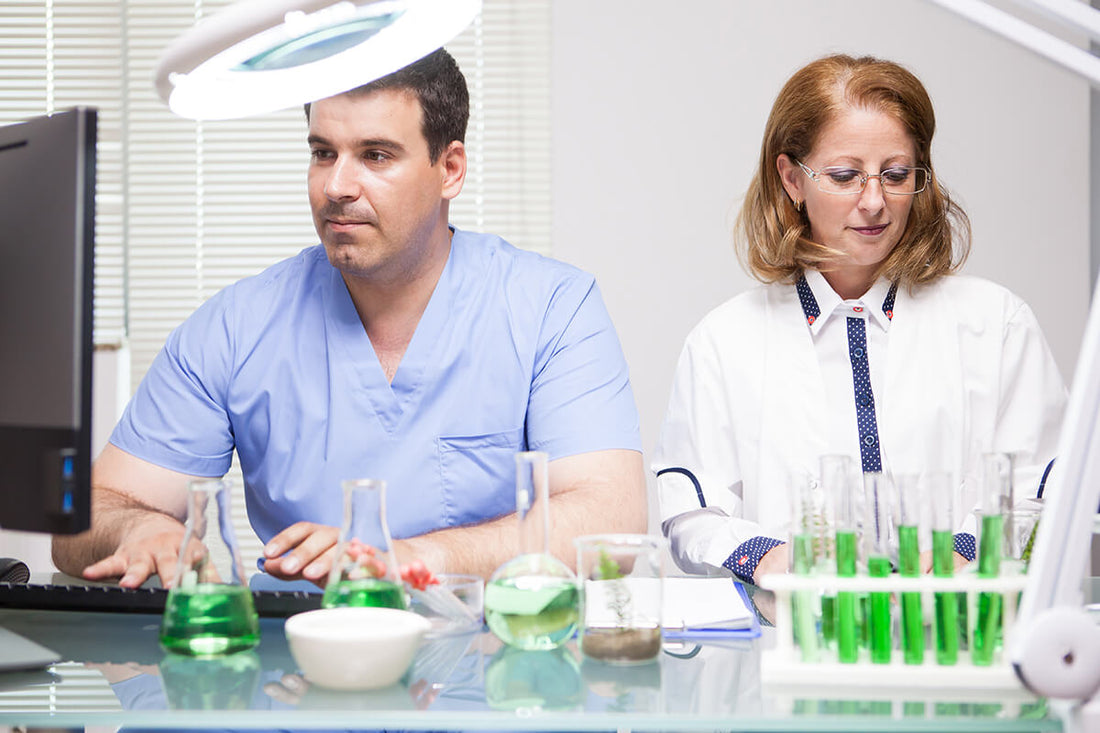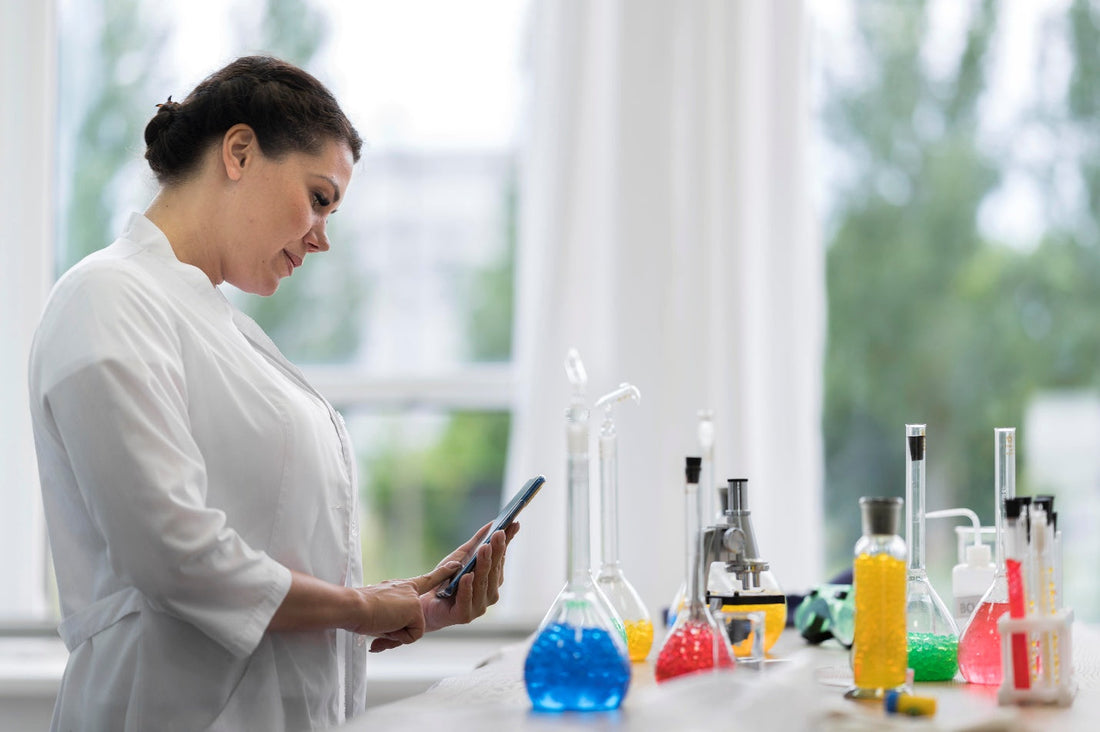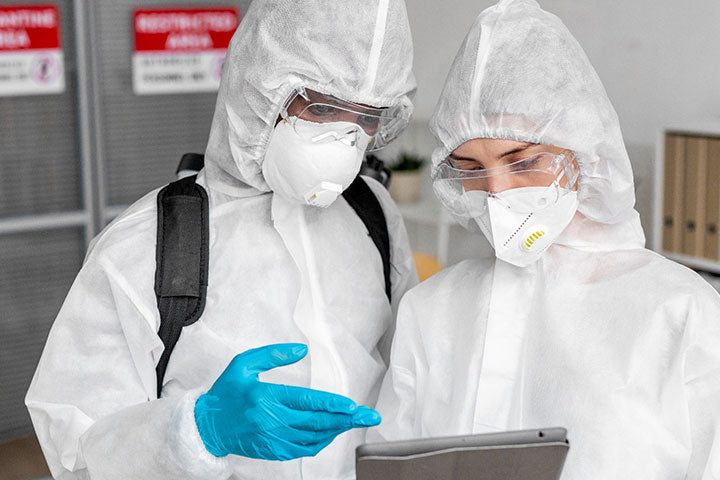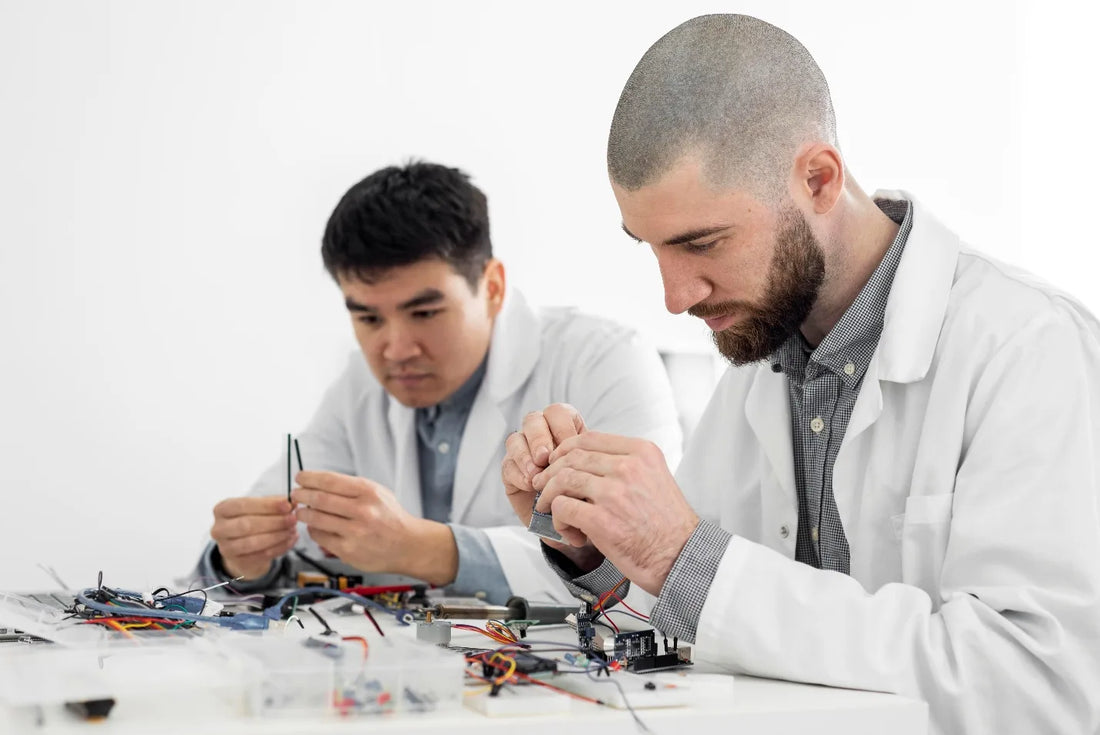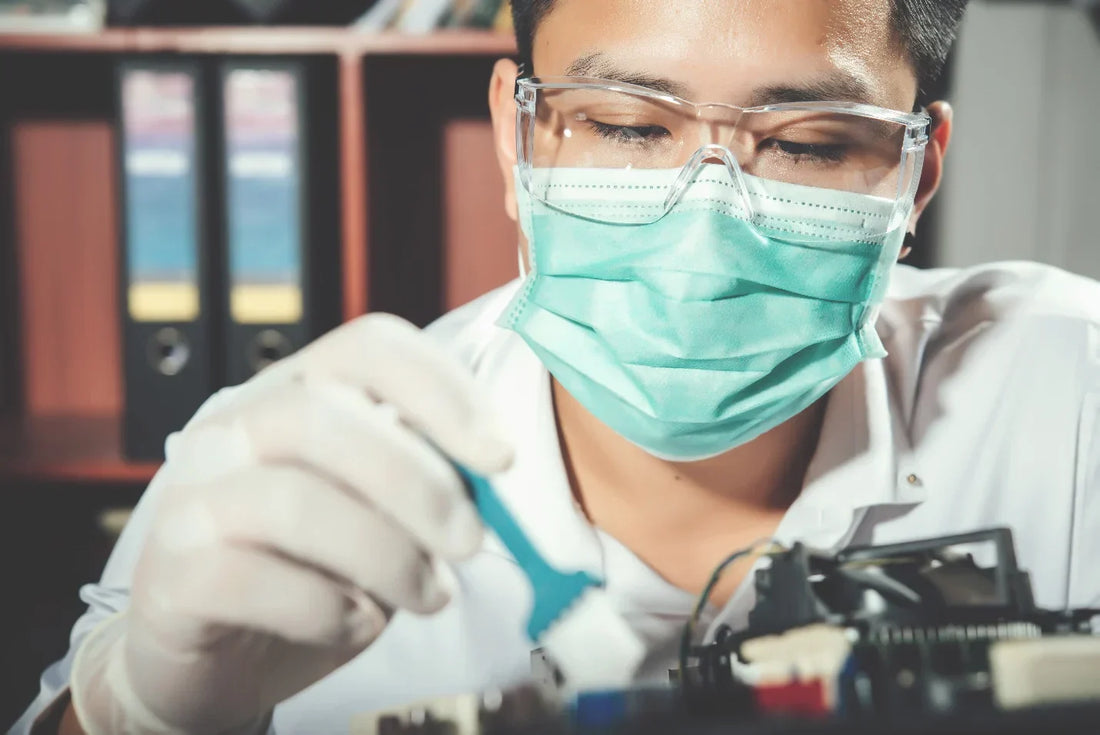Key Factors That Influence Lab Equipment Depreciation

Summary:
-
Lab equipment typically has a useful life of 5-7 years with proper maintenance, though some pieces can last 10+ year.
-
Depreciation is influenced by age, condition, technological obsolescence, brand reputation, and market demand
-
Multiple calculation methods exist: straight-line, declining balance, and MACRS (Modified Accelerated Cost Recovery System)
-
Fair market value considers current condition, replacement cost, maintenance history, and market comparisons
-
Professional ASA-certified appraisers provide credible, USPAP-compliant valuations for accurate assessments
-
Used equipment retains 50-70% less value than new, making purchasing refurbished equipment financially advantageous
Understanding what drives value decline is essential for informed purchasing and selling decisions. Several interconnected factors determine how quickly equipment loses value.
Age and Hours of Operation
Chronological age matters, but operational hours tell a more complete story. A five-year-old microscope used minimally holds value better than a heavily-used three-year-old unit. Most laboratory equipment has an expected useful life of 5-7 years under normal conditions, though well-maintained pieces can function reliably for 10+ years.
Physical Condition and Maintenance
Equipment condition significantly impacts resale value. Instruments showing wear, damaged components, or deferred maintenance command lower prices than well-maintained alternatives. Regular preventive maintenance, documented service records, and prompt repairs preserve both functionality and value. Cosmetic condition matters too—scratches, dents, and corrosion suggest neglect extending beyond appearance.
Technological Advancements
When newer models offer enhanced precision, improved software, better automation, or regulatory compliance features, older equipment becomes functionally obsolete. This depreciation accelerates in rapidly innovating fields like genomics and analytical chemistry. Equipment lacking current software compatibility faces steeper value declines.
Brand Reputation
Established manufacturers like Thermo Fisher Scientific and PerkinElmer command higher resale values because buyers trust their reliability and know parts and service support remain available. Lesser-known brands struggle in secondary markets, even when equipment functions perfectly.
Market Demand
Supply and demand fluctuate based on research trends, regulatory changes, and economic factors. Equipment experiencing high demand—like biosafety cabinets following pandemic awareness—retains value better than specialized instruments with limited applications.
Contact Us to discuss the current market value of your laboratory equipment.
Methods to Calculate Lab Equipment Valuation
Accurately calculating lab equipment depreciation requires choosing the appropriate method for your specific needs.
Straight-Line Depreciation Method
The simplest approach spreads depreciation evenly across useful life:
Annual Depreciation = (Purchase Cost - Salvage Value) / Useful Life
A $100,000 centrifuge with $10,000 salvage value and 5-year life depreciates $18,000 annually. This method works well for financial statements and provides predictable expense recognition.
Declining Balance Method
This accelerated approach recognizes equipment loses more value early. The double declining balance method depreciates at twice the straight-line rate:
Annual Depreciation = Book Value × (2 / Useful Life)
For the same centrifuge, year one depreciation would be $40,000 (40%), year two $24,000 (40% of remaining $60,000), and so on. This better reflects actual market value decline for technology-dependent equipment.
Modified Accelerated Cost Recovery System (MACRS)
The IRS prescribes MACRS for tax purposes, allowing accelerated deductions. Laboratory equipment typically falls under 5-year or 7-year property class, offering significant tax advantages through front-loaded deductions.
Important: Financial reporting depreciation should reflect actual economic useful life, which may differ from IRS tax schedules.
Determining Fair Market Value: What Buyers and Sellers Should Know
Fair market value (FMV) represents the price at which equipment exchanges between willing, knowledgeable parties under normal market conditions.
Replacement Cost Approach
This considers what similar equipment costs today, including new model price, shipping, installation, modifications, and taxes. However, replacement cost often exceeds fair market value because buyers access refurbished alternatives at substantially lower prices.
Market Comparison Approach
Researching actual selling prices of comparable equipment provides the most reliable FMV indicator. Online marketplaces, equipment dealers, and auction results reveal current rates. Compare equipment of similar age, condition, manufacturer, and specifications.
Income Approach
For equipment generating measurable revenue, this calculates value based on future economic benefit. The calculation discounts projected income to present value, accounting for remaining useful life.
Condition-Based Valuation Tiers
Professional appraisers use condition classifications:
-
Tier 4 (Excellent): Recently serviced, fully functional, minimal wear—60-80% of new price
-
Tier 3 (Good): Operational, normal wear, regular maintenance—40-60% of new price
-
Tier 2 (Fair): Functional with minor issues, deferred maintenance—20-40% of new price
-
Tier 1 (Poor): Needs repairs, significant wear—under 20% of new price
-
Tier 0 (Salvage): Non-functional, parts-only value
Explore Our Collection of quality-tested used laboratory equipment.
Lab Equipment Resale Value: How Age, Brand, and Condition Affect Pricing
Understanding how characteristics influence pricing helps maximize return on investment while setting competitive asking prices.
Age-Related Value Curves
Equipment experiences steepest depreciation in the first year (20-25%), followed by 5-10% annual declines. A well-maintained 7-year-old instrument may command 30-40% of original price, while poorly maintained 3-year-old equipment might fetch only 25-30%.
Brand Premium
Established manufacturers maintain stronger resale values due to buyer confidence and available service support. Market leaders typically sell faster and command 10-20% higher prices than lesser-known alternatives with equivalent specifications.
Configuration and Documentation
Complete systems with original accessories, manuals, software licenses, and calibration certificates command premium prices. Comprehensive service records demonstrating regular maintenance dramatically improve resale value, providing buyers confidence in reliability and remaining useful life.
Practical Steps to Estimate Depreciation for Used Lab Equipment
Following a systematic approach ensures accurate depreciation estimates.
Step 1: Gather Equipment Information
Document purchase date, original cost, manufacturer, model, and serial number. Collect maintenance records, service reports, calibration certificates, and usage logs. Photograph equipment from multiple angles.
Step 2: Assess Physical Condition
Conduct thorough visual inspection noting wear, damage, or missing components. Test functionality of all systems. Compare current condition against manufacturer specifications.
Step 3: Research Current Market Values
Survey online marketplaces, equipment dealers, and auction sites for comparable equipment. Note asking and actual selling prices. Adjust comparisons based on condition differences and accessories.
Step 4: Calculate Using Appropriate Method
Select the method matching your purpose (financial reporting, tax planning, or resale pricing). For resale, prioritize market comparison over mathematical formulas.
Step 5: Apply Adjustments
Modify calculated values based on actual condition. Factor in current market demand, technological relevance, and manufacturer support availability.
Step 6: Document Your Valuation
Create written documentation including photographs, market research, calculations, and condition assessments for accounting, insurance, or sale negotiations.
Industry Standards and Tools for Accurate Fair Market Value Assessment
Professional valuation follows established standards ensuring consistency and acceptance.
Uniform Standards of Professional Appraisal Practice (USPAP)
USPAP provides ethical and performance standards for appraisers nationwide. Financial institutions, courts, and regulatory agencies widely accept USPAP-compliant appraisals.
American Society of Appraisers (ASA) Certification
ASA represents the gold standard. The Accredited Senior Appraiser (ASA) designation requires five years of experience, extensive education, examination, peer-reviewed reports, and continuing education. ASA-certified appraisers provide credible, defensible valuations.
Online Valuation Tools
Industry resources include equipment auction databases, online marketplaces, industry publications, and manufacturer trade-in programs. While helpful, these supplement rather than replace professional assessment for high-value equipment.
Working with Specialized Dealers
Experienced dealers like R&D Laboratory Equipment possess deep market knowledge, current pricing intelligence, and condition assessment expertise. We provide testing and certification to Cal/OSHA standards, ensuring equipment meets regulatory requirements. Our services include expert certified repair for biosafety cabinets, fume hoods, and HEPA devices complying with NSF/ANSI standards, plus eco-friendly e-waste disposal for outdated equipment.
Know More About Us and how we help laboratories maximize equipment value.
Common Mistakes to Avoid When Valuing Laboratory Equipment
Avoiding these pitfalls improves accuracy and outcomes.
Relying Solely on Original Purchase Price
The amount paid years ago bears little relationship to current value. Always research current market conditions rather than assuming proportional depreciation.
Ignoring Technological Obsolescence
Mathematical depreciation formulas don't account for equipment becoming outdated. A 5-year-old instrument might calculate to 50% of original value, but actual market value could be far lower if newer models offer substantial improvements.
Overlooking Hidden Costs
Include shipping, installation, training, validation, and facility modifications when assessing replacement value. When selling, factor in decontamination, de-installation, and shipping costs.
Failing to Document Equipment History
Poor record-keeping devastates resale value. Missing calibration certificates or unknown maintenance history makes buyers cautious. Maintain comprehensive equipment logs from purchase through disposal.
Not Seeking Professional Appraisals When Needed
For high-value equipment, estate settlements, insurance claims, or legal disputes, professional appraisals provide defensible valuations that withstand scrutiny.
Conclusion
Accurately determining lab equipment depreciation and fair market value requires balancing mathematical calculations with real-world market understanding. Multiple depreciation methods serve different purposes, from tax planning to financial reporting to resale pricing.
Fair market value depends on complex factors including age, condition, technological relevance, brand reputation, maintenance history, and market dynamics. For laboratories considering used equipment purchases, understanding depreciation patterns reveals the exceptional value proposition refurbished instruments offer, typically costing 50-70% less than new equivalents while delivering comparable performance.
R&D Laboratory Equipment specializes in providing high-quality used laboratory equipment backed by thorough testing, certification to Cal/OSHA standards, and comprehensive product range from biosafety cabinets to incubators and microscopes. Our expert certified repair services ensure NSF/ANSI compliance, while eco-friendly e-waste services help laboratories sustainably manage equipment lifecycles.
Ready to maximize your laboratory equipment value? Contact Us today to discuss your equipment needs.
FAQs
1. How is lab equipment depreciation typically calculated?
Lab equipment depreciation is calculated using three primary methods: straight-line (even distribution across useful life), declining balance (accelerated early depreciation), or MACRS (IRS tax method). The straight-line method divides purchase cost minus salvage value by useful life (typically 5-7 years). Choice depends on whether you're calculating for financial reporting, tax purposes, or resale planning.
2. What factors affect lab equipment resale value the most?
The five most influential factors are equipment age and operational hours, physical condition and maintenance history, technological obsolescence, brand reputation and manufacturer support, and current market demand. Well-maintained equipment from established brands retains value better, while equipment lacking documentation or showing poor maintenance loses value rapidly regardless of age.
3. Why is fair market value important when selling or buying used lab equipment?
Fair market value establishes realistic pricing expectations based on actual market conditions rather than depreciated book values or arbitrary pricing. For sellers, FMV ensures competitive pricing that attracts buyers while maximizing returns. For buyers, understanding FMV prevents overpaying and helps identify good value. FMV is also essential for insurance coverage, estate settlements, and tax reporting.
4. Can I use accounting methods to determine used equipment value for resale?
Accounting depreciation methods provide starting estimates but rarely reflect actual resale value. Book value may differ significantly from fair market value because accounting methods follow tax rules or financial policies rather than market realities. For resale pricing, market research showing actual selling prices of comparable equipment provides more accurate guidance than accounting calculations.
5. Where can I find reliable appraisal services for lab equipment?
Professional appraisal services include ASA-certified appraisers (American Society of Appraisers) who hold Accredited Senior Appraiser credentials in Machinery & Technical Specialties. These professionals follow USPAP (Uniform Standards of Professional Appraisal Practice) guidelines, ensuring credible, defensible valuations. Equipment dealers specializing in laboratory instruments also provide informal valuations based on current market conditions.
6. How long does laboratory equipment typically remain valuable?
Most laboratory equipment has a useful life of 5-7 years under normal operating conditions, though proper maintenance can extend this to 10+ years. However, technological relevance may decline faster than physical lifespan. Equipment often retains 50-60% of original value after five years when well-maintained, though market demand and technological advancements significantly influence actual resale values.
7. Does equipment brand affect depreciation rates?
Yes, significantly. Equipment from established manufacturers like Thermo Fisher Scientific, Agilent, and PerkinElmer depreciates more slowly than lesser-known brands because buyers trust their reliability, parts remain available, and service support continues. Premium brands typically command 10-20% higher resale prices than equivalent specifications from unknown manufacturers, and they sell faster in secondary markets.
8. What documentation helps maximize used equipment value?
Comprehensive service records, calibration certificates, maintenance logs, repair history, original manuals, software licenses, and validation documentation all increase buyer confidence and equipment value. This documentation demonstrates proper care and remaining useful life. Equipment lacking documentation faces significant price resistance as buyers discount for unknown history and potential hidden issues.
9. Should I repair equipment before selling it?
Minor repairs and professional cleaning typically return multiples of their cost through improved sale prices and faster transactions. However, major repairs exceeding 20-30% of resale value rarely make economic sense. Focus on cosmetic cleaning, minor functional fixes, and obtaining current calibration certificates. Transparent disclosure of known issues builds buyer trust and often results in better outcomes than attempted concealment.
10. How does technological obsolescence impact laboratory equipment value?
Technological obsolescence can devastate equipment value regardless of physical condition. When newer models offer substantially better performance, regulatory compliance features, or software integration capabilities, older equipment loses market appeal. Obsolescence accelerates in rapidly evolving fields. Equipment lacking current connectivity standards, discontinued software support, or outdated safety features faces severe value declines despite operational functionality.


